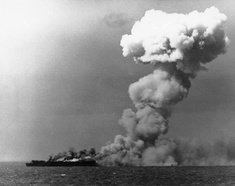Featured Quizzes
User Quizzes
Create Quiz
Data and Charts
Badges and Games
About JetPunk
JetPunk Shop
Dark Mode

History Quiz: How...?
Guess how these things happened/were.
Rate:
Last updated: May 11, 2020
You have not attempted this quiz yet.
More quiz info >>
| First submitted | January 26, 2020 |
| Times taken | 24 |
| Average score | 33.3% | Report this quiz | Report |
6:00
The quiz is paused. You have remaining.
Scoring
You scored / = %
This beats or equals
% of test takers
also scored 100%
The average score is
Your high score is
Your fastest time is
Keep scrolling down for answers and more stats ...
1.
...did the people of Hatra repel a Roman attack in 198 AD?
Spider bombs
✓
Scorpion bombs
✓
Sulphur bombs
✓
These were clay pots filled with scorpions.
2.
...is Shangdu better known?
Xanadu
✓
Luoyang
✓
Shangri-La
✓
It was Kublai Khan's capital city.
3.
...did humans originally reach Great Britain?
By boat
✓
Over a land bridge
✓
Over sea ice
✓
It was known as Doggerland. It was later submerged by rising sea levels.
4.
...was Buddhism officially introduced to Japan?
By a wandering Indian monk
✓
By monks from China
✓
Through a Korean mission, containing monks
✓
The mission was sent by King Seong of Baekje. The Soga clan played a key role in spreading the religion across Japan afterwards.
5.
...many Sapa Inca were there?
19
✓
25
✓
52
✓
The 14th was installed by Francisco Pizarro. The 15th was as well, but revolted and set up an independent Inca state, Vilcabamba. One more was installed by Pizarro and then three more ruled from Vilcabamba.
6.
...would the Rapa Nui choose a Tangata manu?
Contestants would send others to collect bird feather
✓
Contestants would walk on coals
✓
Contestants would send others to collect a bird egg
✓
The people they sent were called hopu. One or two hopu per contestant would swim to the island of Motu Nui (off Easter Island) with a bundle of reeds. Whoever collected the egg would call out their benefactor by a new name and tell them to shave their head. People on the shore of Easter Island would hear it and relay the information to the nearby village of Orongo, where everyone would be waiting. The other hopu would then return while the winner would fast. The winner would then take the egg back in the reeds, attached to their forehead, and climb a cliff to reach the village. If the egg survived, he would present it to his patron, who would have had their head shaved and painted. The patron would then lead a procession, holding the egg, down the slope of a nearby extinct volcano and to Anakena, a white beach (if he was from the western clans) or Rano Raraku, a volcanic crater (if he was from the eastern clans). As such he would be entitled to gifts of food and other tributes, his clan would have sole rights to collect bird eggs from Motu Nui and he would spend a year in seclusion, within a special ceremonial house. He would be considered sacred and would allow his nails to grow long. He would also wear a headdress of human hair and would only eat and sleep, for he would not be expected to do anything else.
7.
...old was Louis Braille when he developed a code for the French alphabet?
22
✓
15
✓
17
✓
He later adapted it to musical notation and published a treatise on the whole system in 1829. In 1837, he published three-volume braille version of a popular history textbook.
8.
...large was Kaifeng's population in 1200 AD?
500,000
✓
70,000
✓
1,000,000
✓
It was one of if not the largest city in the world at the time.
9.
...old is San Francisco (by founding date)?
1776
✓
1710
✓
1832
✓
New Spain established a presidio (fortified base) at the Golden Gate during that year.
10.
...many ships sank during the Battle of Leyte Gulf?
42
✓
33
✓
26
✓
This includes 7 American and 26 Japanese warships.
11.
...are ksars (Berber villages) arranged?
Spread out
✓
Grid plan
✓
Attached houses
✓
There are typically constructed out of adobe, and are fortified. Many of them are ancient.
12.
...did Taíno chiefs elevate themselves above their subjects?
Ceremonial masks, stone houses and totem poles
✓
Golden pendants, square houses and wooden stools
✓
Precious stone necklaces, conch shells and crowns
✓
The pendants were called guanín, the huts (called bohíos) of ordinary villagers were round and the wooden stools allowed them to sit higher than their guests.
13.
...long is the cursus near Stonehenge?
c.3 miles
✓
c.1.9 miles
✓
c.0.9 miles
✓
Cursi are monumental structures resembling ditches or trenches. The one at Stonehenge was constructed between 3630 and 3375 BC, before Stonehenge itself, and is one of a large number of structures located near Stonehenge.
14.
...tall and wide is the archway of Taq Kasra (in metres)?
37 by 26
✓
41 by 35
✓
22 by 18
✓
It is the largest single-span vault of unreinforced brickwork in the world. It was built within the city of Ctesiphon.
15.
...large was the Ashanti Empire in 1874 (in square miles)?
50,000
✓
200,000
✓
100,000
✓
It was located in what is now Ghana.
Comments
No comments yet
New and Popular
Save Your Progress
History Quizzes
Quiz series by MaxStickies
...
Copyright H Brothers Inc, 2008–2024
Contact Us | Go To Top | View Mobile Site
